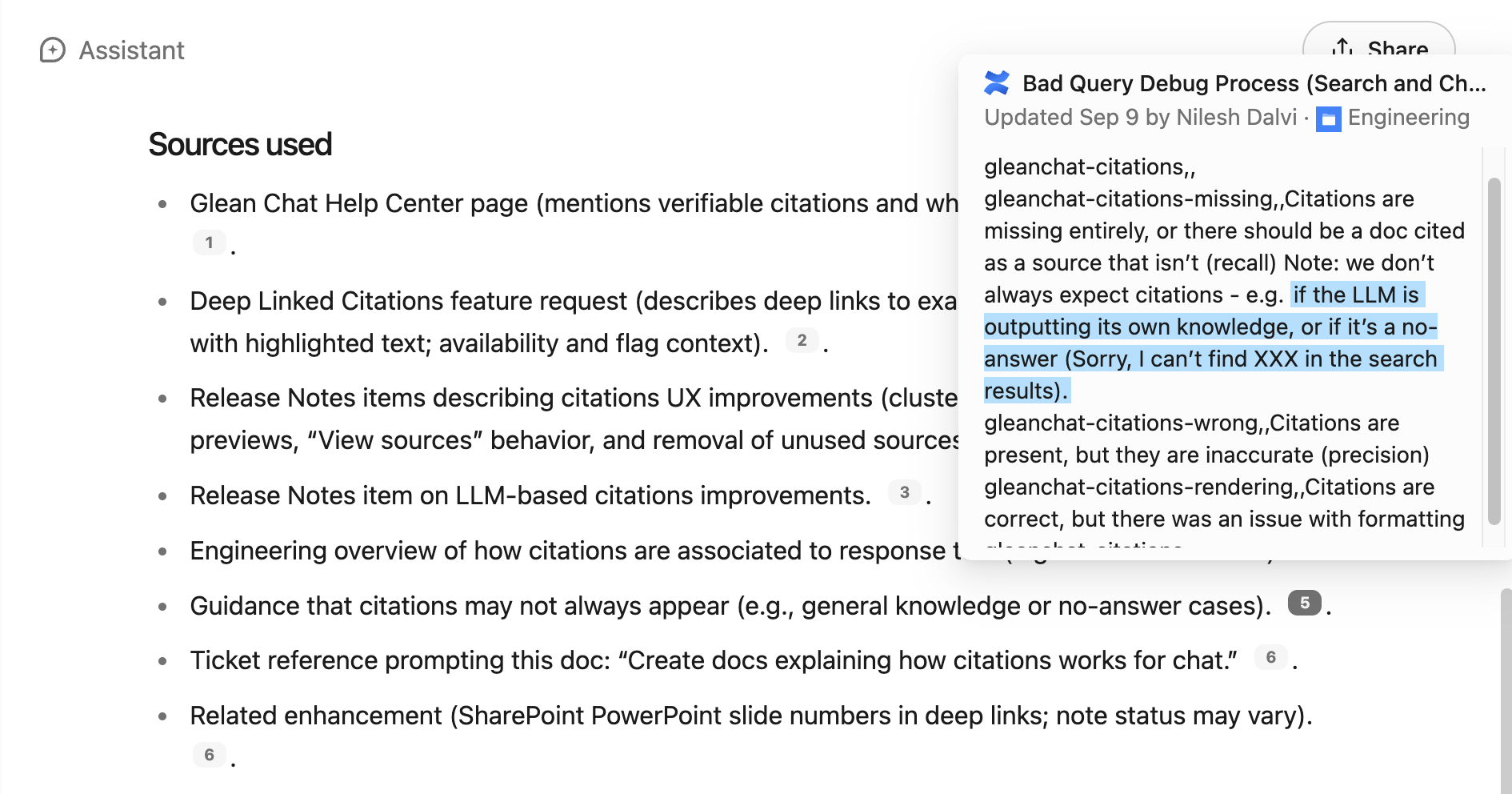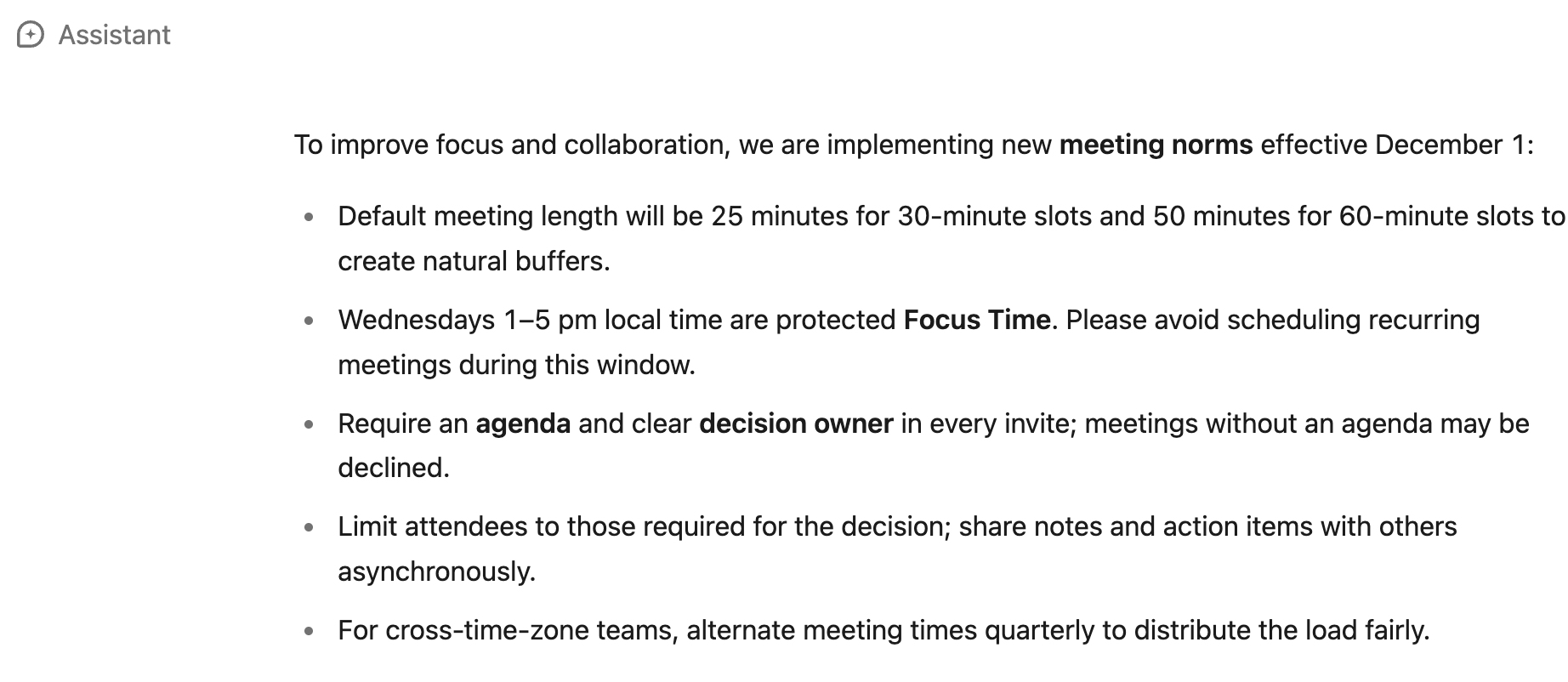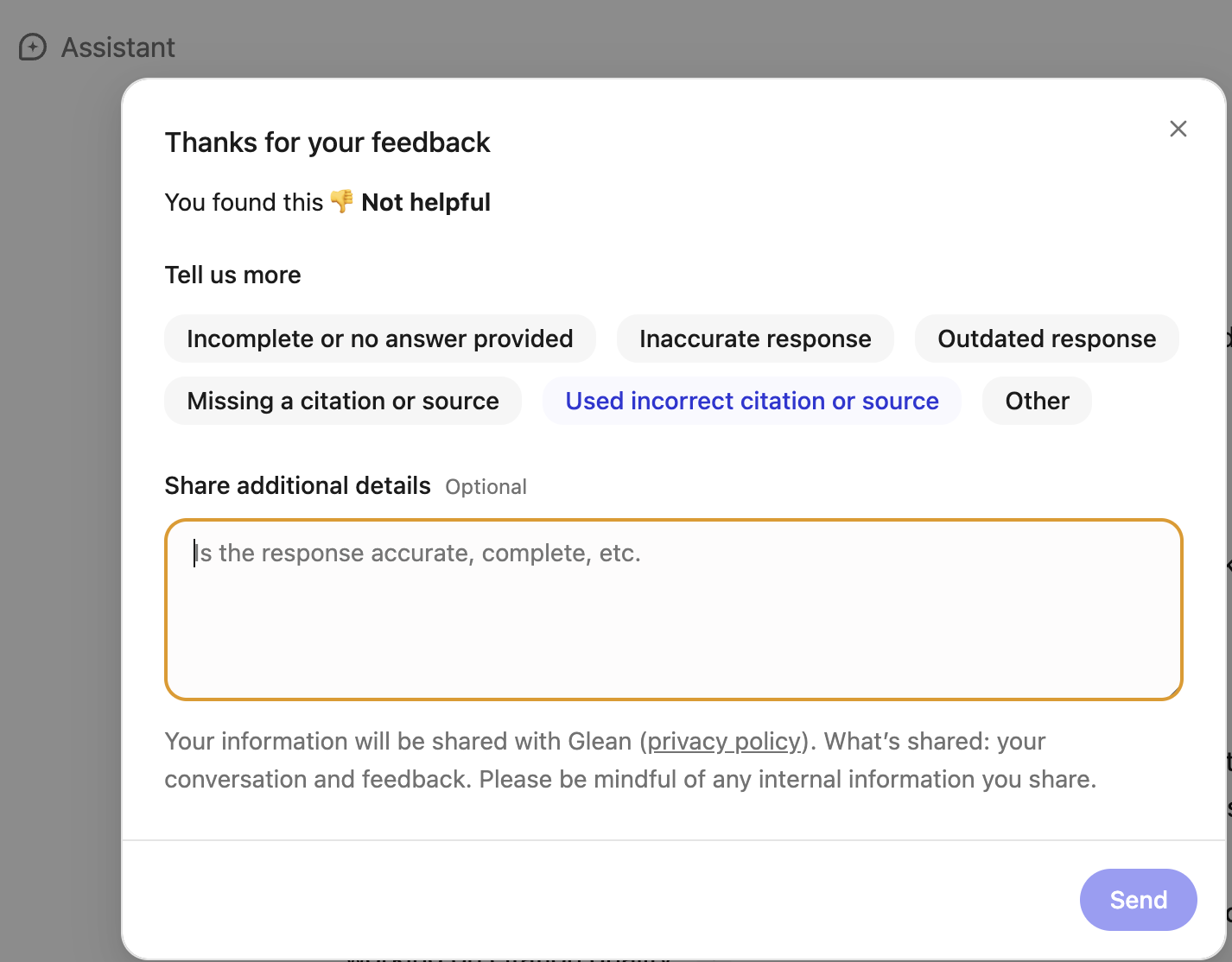- Documents and pages like Google Docs, Confluence, SharePoint pages.
- Files like PDFs, presentations, spreadsheets where a specific portion supports the claim.
- People records when the answer reflects a person as a source like an author or owner reference.
- Inline markers and a View sources section show the sources used for the answer.
- Hover over a citation to preview context.
- Opening a source shows a preview so you can confirm you are looking at the right place before you click through.
- Clicking a source opens the original item in its native application like Google Drive, Confluence, SharePoint which is subject to your access.

- Hover previews highlight the cited text and show surrounding context.
- For certain file types, the link may jump to a specific section, for example, a slide within a presentation when available.
- Page numbers are also displayed for the appropriate sources.
Deep linking availability and behavior can vary by data source and admin settings.
Citation omissions
- If no enterprise sources are searched and the answer relies solely on world knowledge, citations are not generated and this is an expected behavior.

Troubleshooting steps
- Missing citations: Rephrase your question to anchor to company specific knowledge. Add or tag the relevant documentation URLs, for example, “According to our FY25 strategy doc…”.
- Incorrect or low‑quality citations: If you see incorrect citations, share your feedback by clicking on the thumbs down button and select the category as Used incorrect citation or source.

- Can not open a cited item: You can only open items you already have permission to view. Citations should not come for sources that you do not have access to, however they will remain in history if permission is revoked. Source previews and links inherit data controls and retention policies of your organization.
FAQs
Are citations always present?
Are citations always present?
Citation are not always returned. Citations appear when the answer relies on enterprise sources. Responses that only come from public knowledge will not have citations.
Do citations affect answer quality?
Do citations affect answer quality?
Citations have been shown to steer responses to being more truthful. However, the absence of citations is not an indication that a response is hallucinated or wrong.